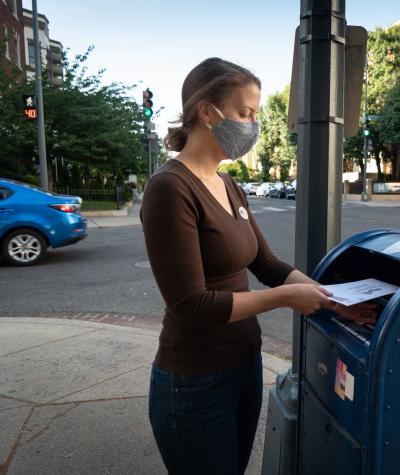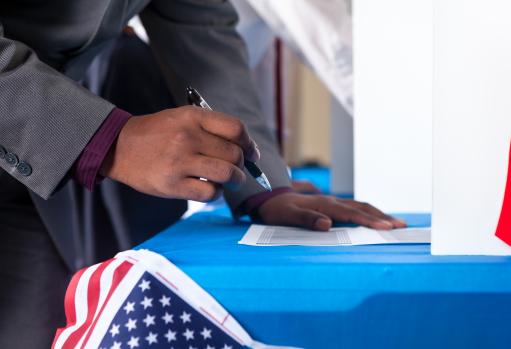By Ben Phillips, a Summer 2020 CLC intern
In light of the ongoing COVID-19 pandemic, each new Election Day presents a new stress test that should help avoid an election disaster in November—if state and federal governments learn from these primaries and plan accordingly.
When it comes to safe and accessible elections, Tuesday’s primary in Kentucky was a mixed bag.
Ahead of Tuesday’s primary election in Kentucky, there were reports that the number of polling places had been cut from 3700 to 200 and that there would be only one polling location in each of the state’s largest cities. While the election was less of a debacle than was widely feared (and went more smoothly than the recent disaster in Georgia), there was still plenty that the state needs to change and get right for November.
Two lessons from Tuesday’s primary in the Bluegrass state:
Vote by mail works—and should be expanded
In April, a bipartisan agreement was reached between Kentucky’s Republican Secretary of State Michael Adams and Democratic Governor Andy Beshear. The state allowed any Kentucky voter to request an absentee ballot and vote by mail. Previously, absentee voting was only available to voters who met certain requirements. As a result of the expanded mail voting, over 883,000 absentee ballots were requested and over half had already been returned as of Monday.
Widely available, no-excuse absentee voting is an obvious way to make voting easier and safer, particularly amid ongoing concerns related to COVID-19. Kentucky’s expansion of absentee voting to all registered voters is a step that all states should take, and voters’ widespread participation shows it works.
Kentucky’s mail-in voting wasn’t completely without issue, however. There were reports of voters throughout the state who had requested a ballot not receiving one, and confusion for some about when their ballots had been counted once they mailed them in.
Increased voter education, clear communication from local and state election officials, and appropriate time and opportunity to request a new ballot would help address these issues and ensure that voting by mail is as safe and reliable as possible.
Polling locations must be prepared to meet demand
Citing health concerns and a lack of poll workers, Kentucky drastically reduced the number of polling locations throughout the state. The number of polling centers was cut by 95%, and there was only one polling location for each of the state’s two largest counties, where over half the state’s Black population lives.
In the days leading up to the election, a bipartisan effort by state lawmakers to force additional polling places to open failed in federal court. A federal judge declined to issue an order that would have required additional polling locations, citing widely available absentee ballots and early voting as sufficient to address any constitutional issues.
While widespread mail-in and early voting helped prevent overcrowding of in-person voting centers on Election Day, the facilities available were not sufficient.
Though lines were manageable throughout the day, traffic congestion—particularly around Louisville’s only polling center—caused significant delays. There were multiple instances of voters waiting in hourlong lines to park their cars at the polling site before being able to enter the building. Minutes before the polls closed at 6pm, voters continued to stream into voting centers, while poll workers called out that they should quickly get in line.
The campaign of Kentucky Senate candidate Charles Booker sought a court injunction to keep polls open until 9 p.m., citing concerns that traffic and crowded parking lots were keeping voters from the polls. A judge allowed just a 30-minute extension to allow voters already outside the building to vote before the doors were locked again at 6:30 p.m.
Voters should not be made to wait in their cars in the parking lot for hours to vote, and those present at the voting center before polls close should be able to vote without needing a court to step in. Having enough polling locations with appropriate numbers of trained staff, is essential, particularly in large cities like Louisville and Lexington.
With most wait times topping out at one-to-two hours rather than four-to-five as was the case at some locations in Atlanta during Georgia’s recent primary, the election in Kentucky can be considered a moderate success. But as the state (and the country) look toward November, election officials must do more to prepare.
Expanding access and education around vote-by-mail, and adequately staffing a sufficient number of voting locations will go a long way toward ensuring a safe, fair, and democratic election.
The widely shared images of desperate voters banging on locked polling center doors in Louisville should be a call to action: the American people want to vote, and governments should respond with keys, not shut the door in their face.

